hankyoreh
Links to other country sites 다른 나라 사이트 링크
The sorrow of Silla’s little prince, told through newly recovered, identified artifacts
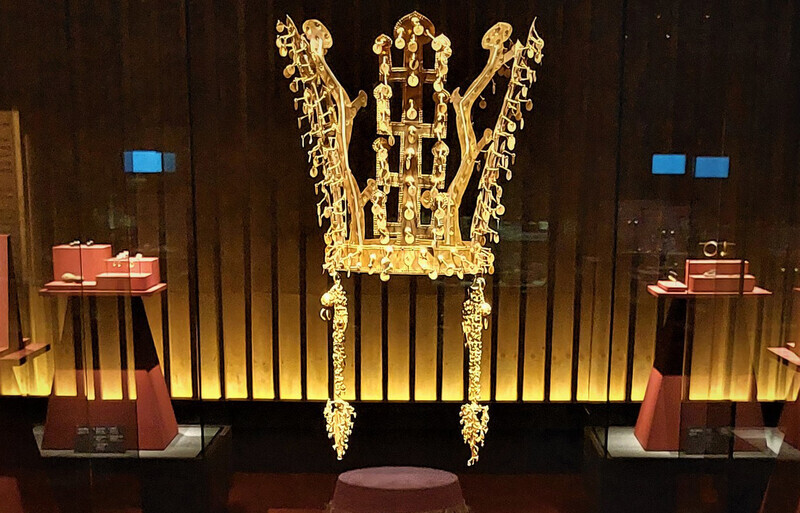
“It is only with the heart that one can see rightly, what is essential is invisible to the eye.”
Two golden bells belonging to a Silla dynasty prince of 1,500 years ago are dangling in front of me, shining like stars, reminding me of a famous line from the novel “The Little Prince.” This quote above is the advice that the desert fox gave to his friend the Little Prince who wanted to leave his home planet.
This was also the will of Antoine de Saint-Exupéry (1900-1944), who died while flying over the Mediterranean as a French air force pilot during World War II. Through his novel, the author used the fox to share with the world what he had learned about life and living while flying.
A special exhibition called “Gold Bells, A Young Soul’s Companion” is currently being held at the Gyeongju National Museum in North Gyeongsang Province. The exhibition has been drawing interest for revealing the lost and at times sorrowful secrets of the tragic death of a “little prince” of the Silla dynasty through findings in the Geumnyeongchong Tomb. These new details are being revealed for the first time now, in the 21st century.
Geumnyeongchong became famous for the clay figurines of warriors on horseback, golden crowns, and glass tableware discovered by Japanese scholars back in 1924. However, the real story and truth about this tomb were hidden.

This exhibition, which features the tomb of a young Silla royal, starts by explaining how the name Geumnyeong itself originated from the two golden eggs embedded with 15 exquisite jewels found on the belt of a young prince in the tomb.
After this sadness was buried in the royal tomb over 1,500 years ago, the full truth was still not revealed even in the 1920s when the tomb was excavated. Ultimately, another 100 years would have to pass before this heartbreak would be revealed to future generations.
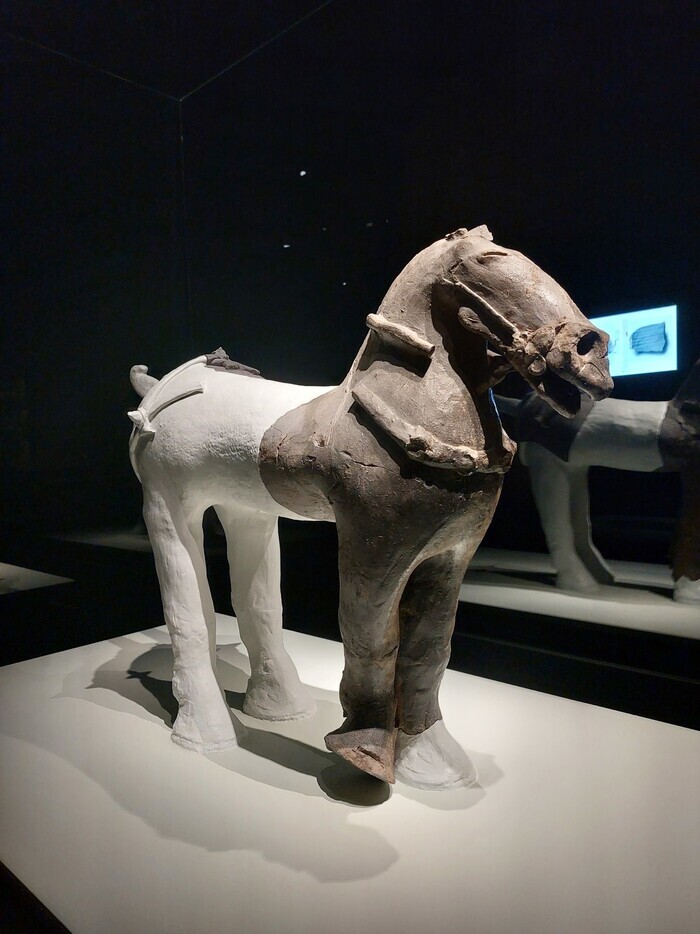
The first Japanese scholars to discover this tomb did not try to understand this sorrow. Instead, they were desperately looking to find archaeological evidence that would prove that the Korean Peninsula had been their territory since ancient times. After excavating the tomb for less than a month, they ended up only emphasizing only the elegant items, including two golden bells found in the waist belt of a young child and the earthenware of warriors on horseback.
The colonists’ dig report was written in a sound and complete way, which was rare for those times, and it is regarded as a major achievement that set the foundation for research into the structure of such stone mound tombs unique to the 6th century Silla Kingdom. Nevertheless, access to Silla’s spiritual world and emotions buried in this tomb remained out of reach.

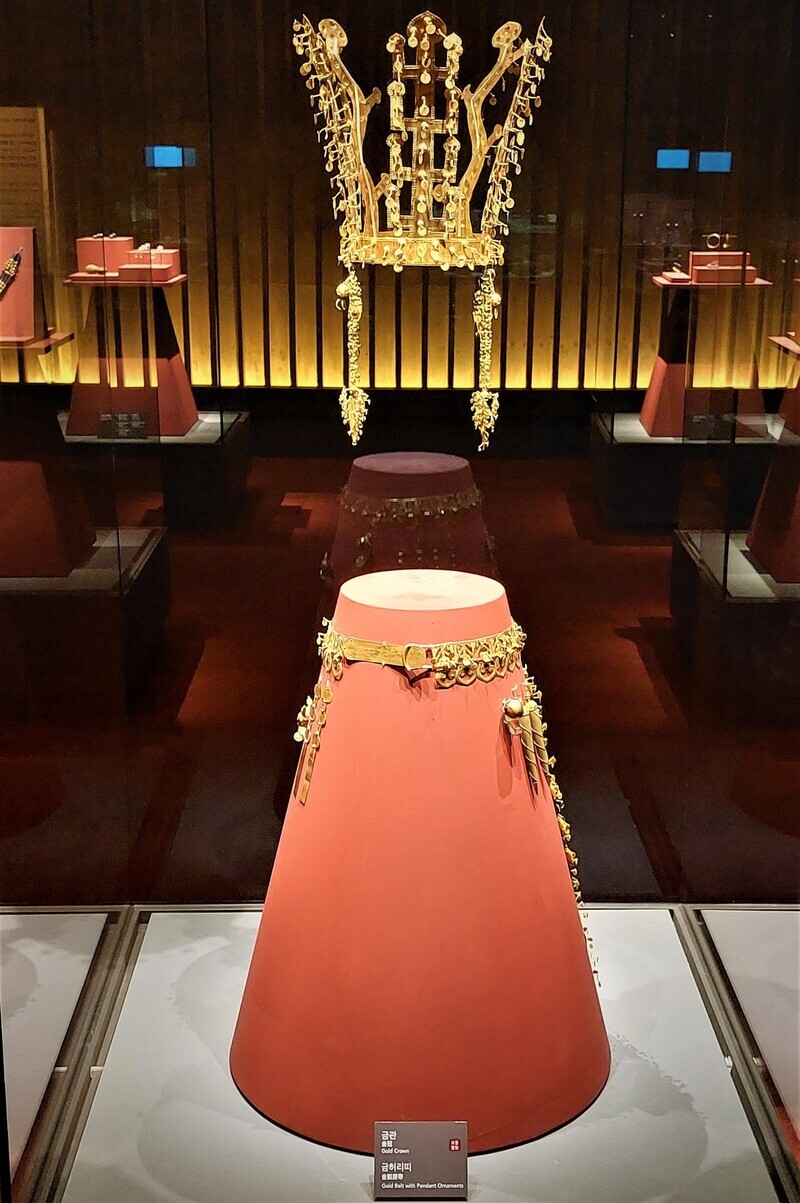
The current exhibition combines the results of the museum's re-excavation of the site from 2018 to 2020 with the findings made during the Japanese colonial era. The exhibition has about 300 items on display, including golden crowns, golden bells, pottery depicting warriors on horses, golden belts, gold rings, and gold breast bands.
The first section of the exhibition, which shows items found when the tomb was first discovered, displays artifacts including two golden eggs, glass cups, and different shaped bells.
The real heart of the exhibition, however, can be found in the second part, titled “The Journey to the Afterlife Together.”
A small gold crown with a height of 27 centimeters and a diameter of 15 centimeters (10.6 x 5.9 in) and a golden belt were placed to match the height of a child of around 1 meter and an unconventional attempt was made to hang the crown in midair.
Next to this display, accessories including high-quality earthenware, breast bands, earrings, golden rings, and bracelets that were buried in the same tomb can also be seen.
The warriors on horseback depicted through earthenware, which can be seen as the ultimate display of Silla earthenware, are made up of two pieces, commonly known as a master statue and a servant statue, and are placed in front of the display case of the crown to serve as guides to the deceased.
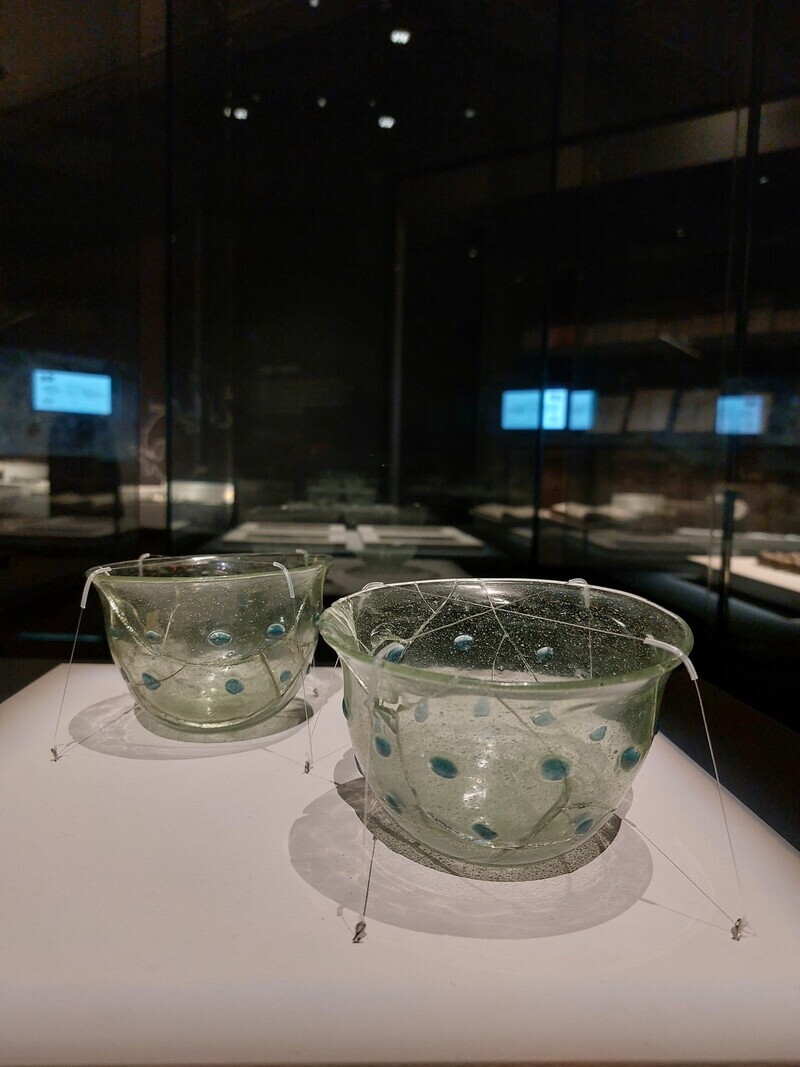
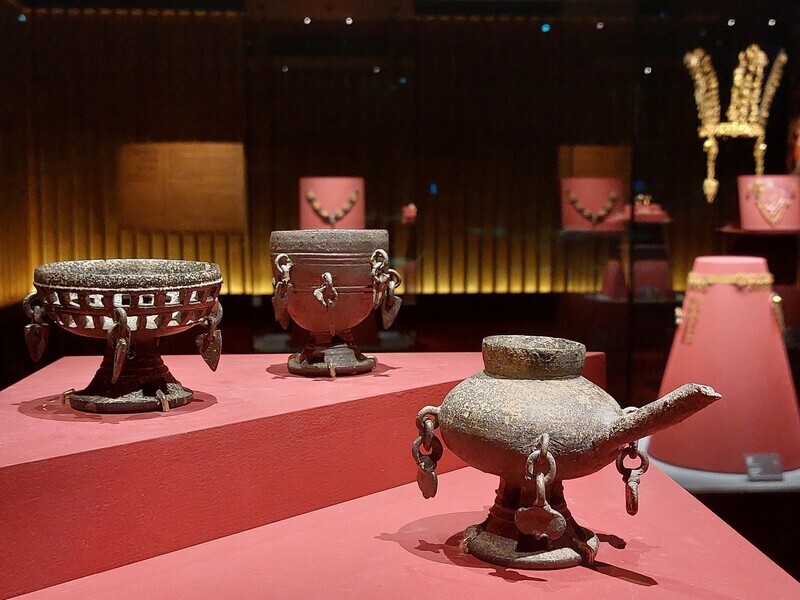
In the area where the re-excavation and restoration results are displayed, two items stand out in particular: a restored horse saddle ornament and a real leather strap that was placed at the back of horses.
At the time of the original excavation, the Japanese mistakenly thought that the horse with the saddle ornament was a monster. But now, finally, this exquisite piece of art has reemerged and is being shared with the public.
The leather strap is a rare relic that is being revealed to the public for the first time through this exhibition, and even the connecting parts such as metal junctures still look vivid, as if looking into a time capsule.
The head and front legs were found intact, but most of the remaining parts were not found. The other parts are presumed to be scattered at nearby connected tombs and in the vicinity of Siknichong, raising curiosity about the future excavation process.
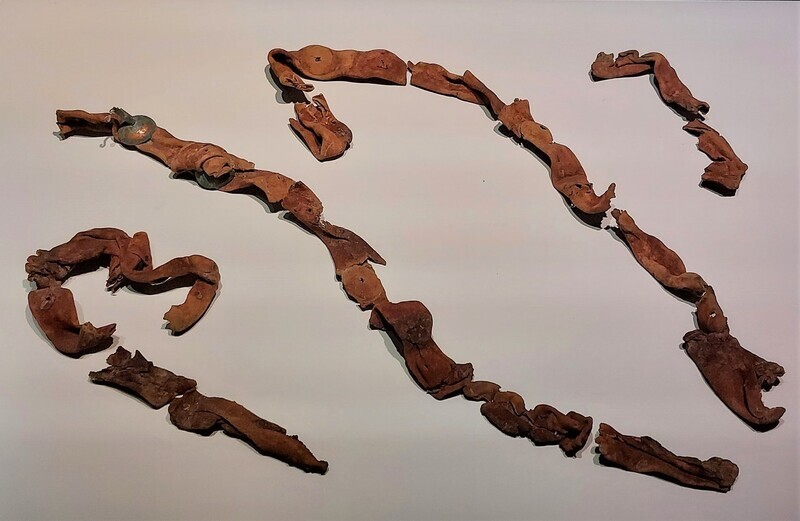
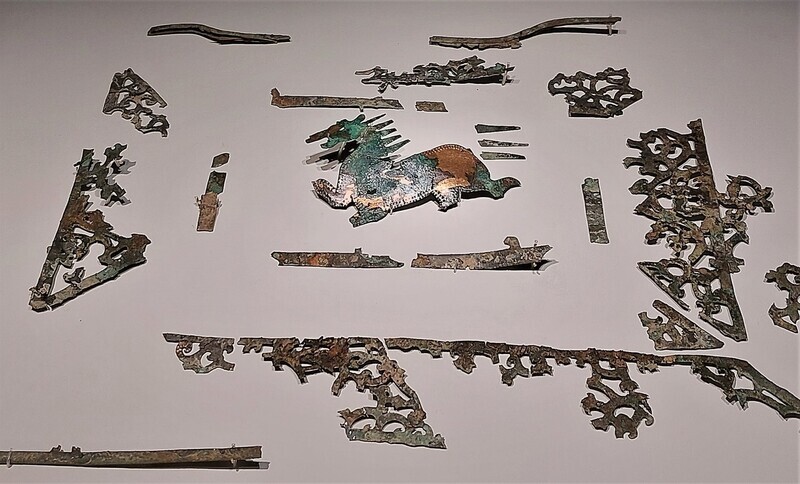
This exhibition has great academic significance in that it brings together the results of archeological excavations completed both in current times and 100 years ago to bring together the relics excavated from Geumnyeongchong in one place for the first time in history.
It is also significant for how it shows us the sadness of burying what you love, and how this tomb, created by bitter and distant feelings, was created. The exhibition runs until March 5, 2023.
Article and photos by Roh Hyung-suk, culture correspondent
Please direct questions or comments to [english@hani.co.kr]

Editorial・opinion
![[Column] Life on our Trisolaris [Column] Life on our Trisolaris](https://flexible.img.hani.co.kr/flexible/normal/500/300/imgdb/original/2024/0505/4817148682278544.jpg) [Column] Life on our Trisolaris
[Column] Life on our Trisolaris![[Editorial] Penalties for airing allegations against Korea’s first lady endanger free press [Editorial] Penalties for airing allegations against Korea’s first lady endanger free press](https://flexible.img.hani.co.kr/flexible/normal/500/300/imgdb/original/2024/0502/1817146398095106.jpg) [Editorial] Penalties for airing allegations against Korea’s first lady endanger free press
[Editorial] Penalties for airing allegations against Korea’s first lady endanger free press- [Editorial] Yoon must halt procurement of SM-3 interceptor missiles
- [Guest essay] Maybe Korea’s rapid population decline is an opportunity, not a crisis
- [Column] Can Yoon steer diplomacy with Russia, China back on track?
- [Column] Season 2 of special prosecutor probe may be coming to Korea soon
- [Column] Park Geun-hye déjà vu in Yoon Suk-yeol
- [Editorial] New weight of N. Korea’s nuclear threats makes dialogue all the more urgent
- [Guest essay] The real reason Korea’s new right wants to dub Rhee a founding father
- [Column] ‘Choson’: Is it time we start referring to N. Korea in its own terms?
Most viewed articles
- 1New sex-ed guidelines forbid teaching about homosexuality
- 2OECD upgrades Korea’s growth forecast from 2.2% to 2.6%
- 360% of young Koreans see no need to have kids after marriage
- 4[Column] Life on our Trisolaris
- 5[Guest essay] Maybe Korea’s rapid population decline is an opportunity, not a crisis
- 6Months and months of overdue wages are pushing migrant workers in Korea into debt
- 7Presidential office warns of veto in response to opposition passing special counsel probe act
- 8Inside the law for a special counsel probe over a Korean Marine’s death
- 9Two lung cancer deaths at Samsung Electronics deemed occupational in nature
- 10Korean government’s compromise plan for medical reform swiftly rejected by doctors